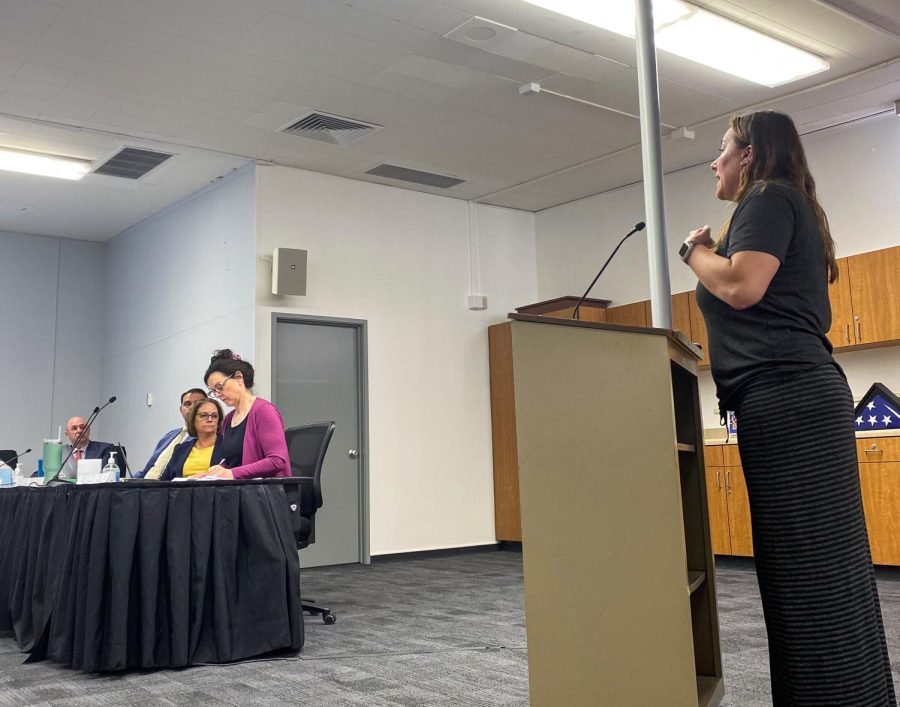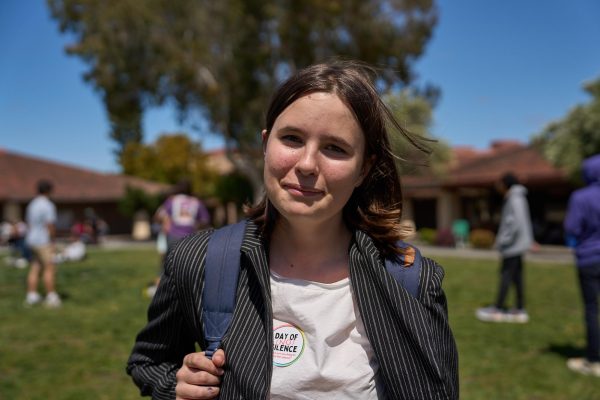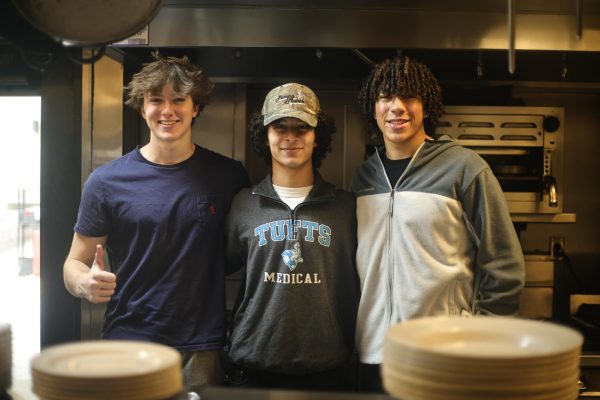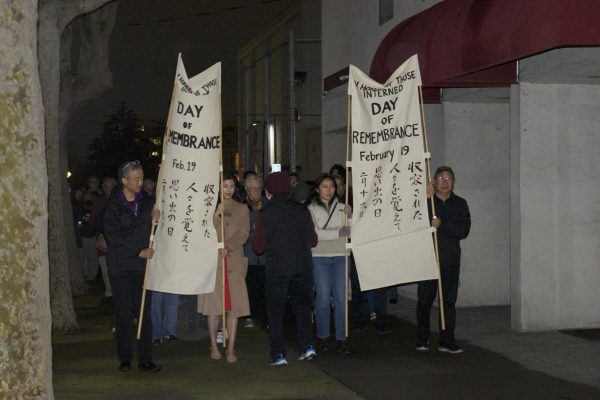Incidents prompt board to invest in behavioral intervention
LET VOICES BE HEARD Krista Velasquez speaks out on the lack of support for teachers with behavioral intervention. “We can’t support all of our learners who aren’t accessing our curriculum and all of the behaviors all at one time,” Velasquez said. Photo by Natalie Neumann.
Superintendent Don Austin is promoting a wide range of investments in behavioral intervention after several incidents shook the sense of security and safety for Palo Alto Unified School District students and staff.
These changes include, but are not limited to, increasing the number of Behavioral Intervention Coaches , providing a modified Safety Care training for employees, and staffing an additional Therapeutic Services program at Fletcher Middle School, according to an update from Austin on May 26.
As stated in the update, the school board is also discussing a potential adoption of a districtwide Social Emotional Learning program in their upcoming June meeting.
This was sparked by a May incident at Jane Lathrop Stanford Middle School, where two teachers and a student with disabilities suffered from severe injuries, with one experiencing what one teacher alluded to in a May 26 board meeting as an “unimaginable catastrophic loss.”
Following the event at JLS, district teachers and community members expressed growing concerns during the open comments segment of the May 26 board meeting.
Amanda Boyce, lead of the Elementary Behavior Support ad hoc committee, a short term committee to address current issues, presented the committee’s advised changes to the board that would help create a better support system for students with behavioral concerns.
“The recommendations from the behavior elementary ad hoc committee include implementation of consistent social emotional learning programs and behavioral intervention strategies in tier one, access and support for all students from our behavioral team in tier two and continued more intensive support and direct service from our behavioral team in tier three,” Boyce said.
Along with the three tiers of intervention, Boyce shared the other strategies the committee wanted to implement into the system, for example integrating the PAUSD behavioral flowchart and providing parent education on how to support dysregulated children. Other recommendations include how to build consistent communication with the school to expand the Behavior Support Team and building consistent behavior management practices for student behavior data. These ideas together build and create a supportive and inclusive learning environment on campus.
The community is watching, and so are we
— Daniel Nguyen
Boyce said the recommendations will help foster a sense of belonging through inclusive and welcoming environments and will help support the social, emotional, physical, and mental health of students.
PAUSD elementary school teacher and ad hoc committee member Krista Velasquez emphasized how important it is for these changes to be made for teachers to be able to support all students.
“We need more support,” Velasquez said. “We need more help with helping our kids that are struggling because we have a lot of kids, especially after COVID that are emotionally struggling. We can’t support all of our learners who aren’t accessing our curriculum and all of the behaviors all at one time.”
Velasquez said teachers are struggling to do their job and support students because of also having to manage students behavior, stressing the importance of having the board step up and find new ways to give teachers additional help.
“We’re failing to teach them properly in reading,” Velasquez said. “We’re failing to teach our most struggling kids in math because we are chasing behaviors by ourselves. We’re being asked to be therapists, teachers, administrators, behaviorists, everything on our own, isolated in our classrooms, and we can’t do it.”
After the JLS incident, teachers have been voicing concerns specifically on the regulations regarding when staff can intervene during a student fight.
“Our biggest concern comes from this thing that we keep hearing that if a fight starts we’re not supposed to break it up, we’re supposed to leave the classroom,” Velasquez said. “That’s really terrifying for teachers because, of course, we want to protect every child in the classroom, no matter what, even if it’s the child that’s attacking, they need support … and to abandon any child, any student and when they’re in [these situations], that’s just not what we’re here for.”
Daniel Nguyen spoke on the topic behavioral system, specifically on violent incidents, and said the board must pass new policies to ensure the safety of faculty and students.
“It’s unfortunate it took a teacher suffering an unimaginable catastrophic loss to get the district’s attention about staff and student safety,” Nguyen said. “But now that we have your attention, the district must unequivocally declare they have zero tolerance for violence by committing to pass policies that remove anyone who attacks the staff member or student.”
Nguyen said as this topic has been brought up to the surface, everyone is carefully watching what the board members will do next.
“The community is watching,” Nguyen said. “And so are we.”








